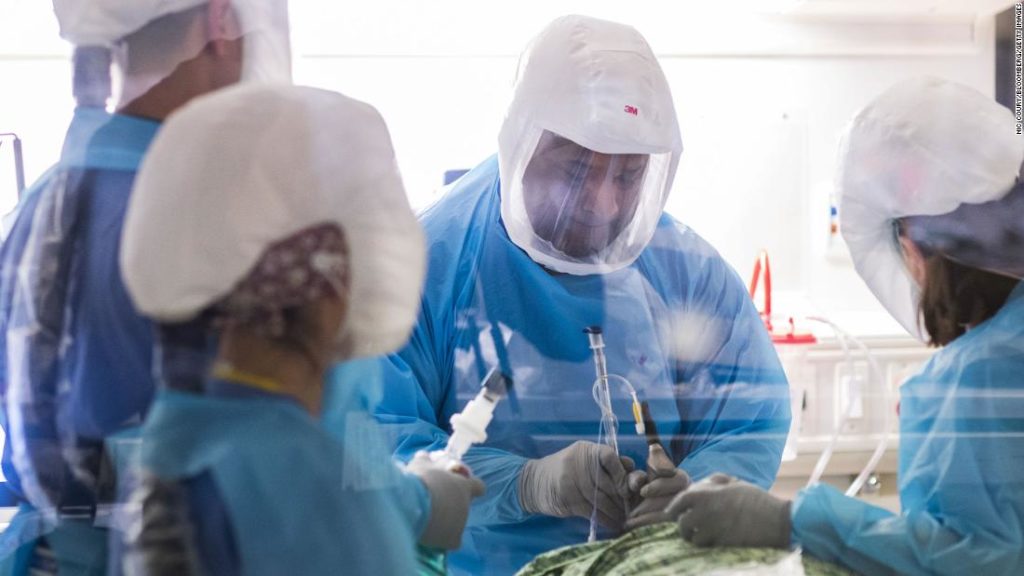“The variants that have been identified recently seem to spread more easily,” CDC Director Dr. Rochelle Walensky said Wednesday. “They’re more transmissible, which can lead to increased number of cases, and increased stress on our already overtaxed system.”
Here’s why some vaccines are ‘sitting on the shelves’
She explained some of the 47 million doses distributed just arrived in states, while others are still going through a days-long distribution process to make it to their final destination.
“So there is some delay from the time that they’re distributed and to the time that they could possibly be administered,” Walensky said. There’s also a delay in reporting the administrations, she added.
“And then there are some doses that we need to make sure, for the four or five-day window that we give people in order to get their second shot… we need to make sure that that’s available for them when they return for their second shot,” she added.
But even when all those factors are taken into consideration, there are still some “millions” of doses left “sitting on the shelves,” she said.
“That’s one of the bottlenecks and one of the ways that we have to get resources to the states, to make sure that they can quickly administer the vaccines that are on their shelves,” Walensky said.
Service members could be deployed at up to 100 sites nationwide to help boost administrations, the FEMA spokesperson said.
The federal government is also amending rules to help broaden the list of people who can administer vaccines, White House Covid-19 Response Coordinator Jeff Zients said Wednesday.
“(The Health and Human Services Department) will amend the current Public Readiness and Emergency Preparedness Act — otherwise known as the PREP Act — to permit doctors and nurses who have recently retired or become inactive to administer shots, and to permit anyone currently licensed to vaccinate in their state to administer shots across state lines,” Zients said.
The action, Zients said, will help “get more vaccinators in the field.”
Why you need to be cautious even after vaccine
Once Americans do receive both doses of their Covid-19 vaccine, they shouldn’t view that as a “free pass” to leave all safety measures behind, Dr. Anthony Fauci said Wednesday. At least not yet.
Maximum immunity against the virus begins about 10 days to “two weeks and beyond” after the second dose, Fauci said during CNN’s town hall.
But actions such as traveling are still not a good idea.
“If you absolutely have to travel and it’s essential, then obviously one would have to do that,” he said. “But we don’t want people to think because they got vaccinated, then other public health recommendations just don’t apply.”
“So getting vaccinated does not say ‘Now I have a free pass to travel,’ nor does it say that ‘I have a free pass to put aside all of the public health measures’ that we talk about all the time.
CDC: No sign of safety concerns with vaccines
As for the vaccines themselves, here’s what scientists do know so far.
Severe allergic reactions, known as anaphylaxis, are so far not a problem, according to Walensky.
“Based on our most recent data … we found that there were 2.1 cases of anaphylaxis per million administered doses of Moderna, and 6.2 cases of anaphylaxis per million doses administered of Pfizer,” Walensky said during a White House Covid-19 response team briefing.
“Let me be clear. These are rare treatable outcomes, and the Covid-19 vaccines are safe,” she said.
The CDC director added that it’s also important to put the numbers into context, and consider that the risk of getting sick with the virus is “much higher” than the risk of allergy from the vaccine.
Other mild side effects, like pain in the arm, feeling tired and muscle aches after the shot are “all normal and expected,” Walensky said.
“And these symptoms mean that your immune system is revving up and the vaccine is actually working,” she added.
CNN’s Maggie Fox, Geneva Sands, Barbara Starr, Andrea Diaz and Ben Tinker contributed to this report.
You may also like
-
UK coronavirus variant has been reported in 86 countries, WHO says
-
NASA technology can help save whale sharks says Australian marine biologist and ECOCEAN founder, Brad Norman
-
California Twentynine Palms: Explosives are missing from the nation’s largest Marine Corps base and an investigation is underway
-
Trump unhappy with his impeachment attorney’s performance, sources say
-
Lunar New Year 2021: Ushering in the Year of the Ox

